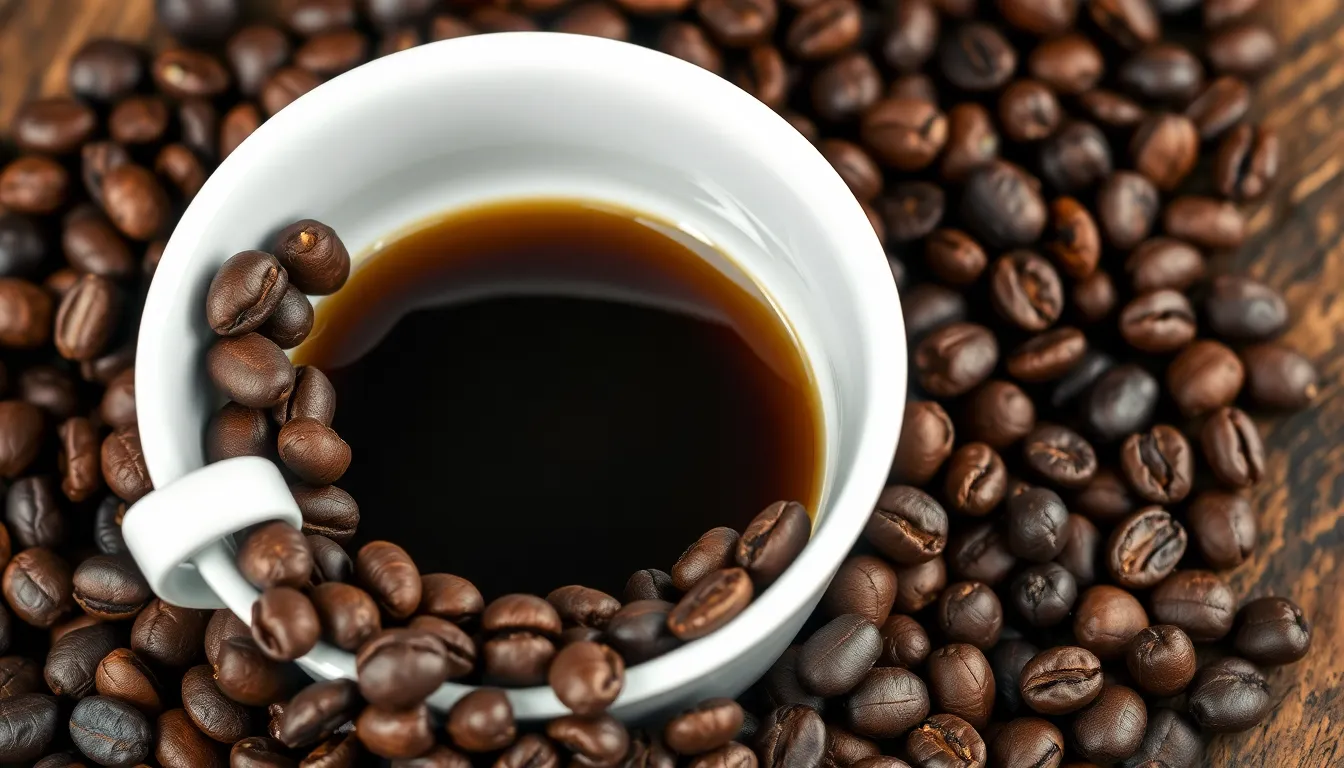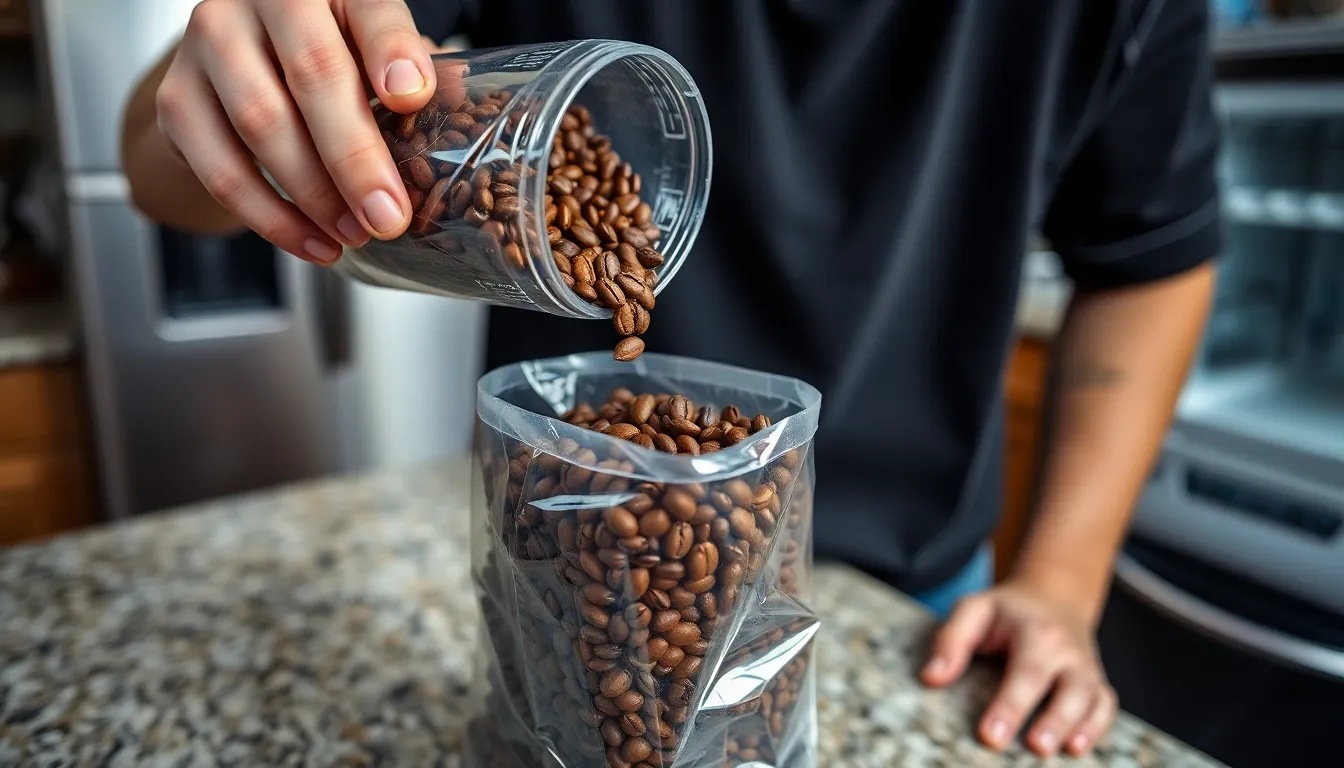Ever wondered if your coffee has an expiration date? That perfectly roasted bag sitting in your pantry won’t stay fresh forever, and knowing when it’s past its prime could save your morning brew.
Coffee doesn’t technically “go bad” like milk or meat, but it does lose its flavor and aroma over time. Whether you’re a casual coffee drinker or a devoted enthusiast, understanding how to interpret those dates on your coffee packaging can make a important difference in your daily cup. Factors like storage conditions, bean type, and whether it’s ground or whole can all affect how long your coffee maintains its quality.
Understanding Coffee Shelf Life
Coffee’s shelf life varies dramatically depending on several key factors. Unlike milk or meat, coffee doesn’t typically become unsafe to consume after its prime—it simply loses its desirable characteristics. Let’s explore what affects how long your coffee stays fresh and how to interpret those confusing date labels.
Factors That Affect Coffee Freshness
Oxygen exposure ranks as the primary enemy of coffee freshness. When coffee beans come into contact with air, oxidation begins breaking down the compounds responsible for flavor and aroma. Storage containers make a important difference—airtight containers with one-way valves protect beans by keeping oxygen out while allowing CO₂ to escape. Temperature fluctuations accelerate degradation, with heat causing oils to turn rancid faster. Coffee stored in cool, dark places maintains freshness 3-4 times longer than coffee kept near heat sources.
Processing methods impact longevity too. Dark roasted beans generally last longer than light roasts due to their lower moisture content. Ground coffee loses freshness within 1-2 weeks after opening, while whole beans can maintain quality for 2-3 months when properly stored. Specialized packaging technologies like nitrogen flushing can extend shelf life by creating an oxygen-free environment inside the package.
Moisture and light exposure drastically reduce freshness. Even brief exposure to humidity can cause coffee to absorb water, leading to faster degradation of flavor compounds and increasing the risk of mold development. UV light breaks down the natural oils in coffee beans, resulting in a flat, stale taste profile.
The Difference Between “Best By” and Expiration Dates
“Best by” dates indicate peak quality, not safety concerns. These dates suggest when the manufacturer believes the coffee will offer optimal flavor—typically 6-12 months from the roast date for packaged coffee. Coffee consumed after this date remains perfectly safe but might deliver a less vibrant taste experience. Many coffee enthusiasts notice subtle flavor changes even before reaching the best-by date.
Expiration dates, though less common on coffee packaging, represent the manufacturer’s estimate of the product’s final usable date. These dates appear more frequently on instant coffee or flavored coffee products that contain additional ingredients. Specialty coffee roasters often forgo expiration dates entirely, instead prominently displaying roast dates to help consumers track freshness.
Date formatting varies by manufacturer and region. Some companies use coded dates that require interpretation—for example, “A2123” might indicate the coffee was packaged on the 212th day of 2023. Others use straightforward month/day/year formats. Coffee bags from small-batch roasters typically feature clear “roasted on” dates, giving you the most accurate information about your coffee’s age.
How to Tell If Your Coffee Has Gone Bad

Coffee gradually deteriorates in quality rather than spoiling like other foods. You’ll notice several telltale signs when your coffee is past its prime, affecting both your brewing experience and final cup quality.
Visual and Aroma Indicators
Fresh coffee beans or grounds have a rich, distinctive appearance and smell that changes noticeably as they age. Look for visible mold or unusual discoloration on your beans or grounds, as these are clear indicators of spoilage. The vibrant aroma of fresh coffee disappears over time, replaced by a flat, stale, or even rancid smell if the oils have degraded. Coffee beans that appear excessively oily after prolonged storage typically indicate oxidation has occurred, though this doesn’t always mean they’re unusable unless accompanied by an off-putting smell. A quick sniff test often provides the most reliable indication of coffee quality—fresh coffee emits a strong, pleasant fragrance that’s immediately recognizable.
Taste Changes in Expired Coffee
Your coffee’s flavor profile offers the most definitive evidence of its condition. Coffee that’s past its prime typically tastes flat, dull, or excessively bitter, having lost the rich and balanced flavor notes that make a great cup. Rancidity produces sour or off-putting flavors due to oxidation of the natural coffee oils. Even coffee beyond its best-before date remains technically drinkable but lacks the original taste quality and complexity that makes the brewing experience worthwhile. The absence of acidity, floral notes, or chocolatey undertones indicates your coffee has aged past its peak drinking window. Trust your palate—if your morning cup tastes significantly different from what you’re accustomed to, your coffee has likely deteriorated in quality.
Proper Coffee Storage Methods

Proper storage dramatically extends your coffee’s freshness and flavor. The environment where you keep your coffee plays a crucial role in preserving its quality and preventing premature staleness.
Whole Bean vs. Ground Coffee Storage
Whole bean coffee maintains freshness significantly longer than ground coffee due to its smaller surface area exposed to oxygen. The intact structure of coffee beans acts as a natural barrier, protecting the essential oils and flavor compounds locked inside. Ground coffee, with its increased surface area, allows oxygen to interact with more of the coffee particles simultaneously, accelerating oxidation and flavor deterioration. For maximum freshness, grind your beans just before brewing rather than storing pre-ground coffee for extended periods. Many coffee enthusiasts follow the “15-minute rule” – grinding only what’s needed within 15 minutes of brewing to experience the fullest flavor profile. If you must store ground coffee, use it within 1-2 weeks of opening for the best taste experience.
Container Types and Environmental Factors
The container you choose directly impacts how long your coffee stays fresh. Opaque, airtight containers provide the best protection against coffee’s four main enemies: oxygen, moisture, heat, and light. Glass or ceramic containers with rubber-sealed lids create an optimal storage environment by blocking light and forming an airtight seal. Specialty coffee containers featuring one-way valves offer an excellent solution as they release built-up CO2 while preventing oxygen from entering. Temperature stability matters enormously – store your coffee away from appliances that generate heat or fluctuate in temperature. Your kitchen counter near a sunny window or above your oven represents the worst possible storage location. Instead, place your coffee in a pantry or cabinet away from moisture sources like sinks and dishwashers. The ideal storage temperature ranges between 50-70°F (10-21°C) with humidity levels below 60%. Avoid refrigerating your coffee as this introduces moisture when the container is opened and closed, potentially causing flavor contamination from surrounding foods.
Health and Safety Considerations of Expired Coffee

Safety Profile of Old Coffee
Expired coffee rarely poses health risks when consumed. The primary concern with old coffee is diminished taste quality rather than toxicity or illness. Coffee’s high acidity and low moisture content create an environment that’s generally inhospitable to harmful bacteria. Most coffee drinkers notice that stale coffee simply doesn’t taste good long before it becomes unsafe to drink. Always check for visible signs of spoilage such as mold growth, unusual discoloration, or foul odors before consuming coffee that’s past its prime.
Coffee with Dairy Products
Adding milk or creamer significantly changes coffee’s safety timeline. Coffee containing dairy products shouldn’t sit at room temperature for more than two hours due to the risk of bacterial proliferation. Bacteria multiply rapidly in the protein-rich environment that milk provides, potentially causing foodborne illness if consumed. Refrigerated coffee with dairy may last longer but should be consumed within 24 hours for optimal safety. The presence of dairy transforms coffee from a low-risk beverage to one that requires proper food safety handling.
Recognizing Spoilage Signs
Coffee displays clear indicators when it’s no longer suitable for consumption. Mold appears as fuzzy spots on beans or grounds, often in green, white, or black colors. Unusual odors that differ from coffee’s characteristic aroma signal chemical changes that have occurred during decomposition. Coffee that smells rancid, sour, or musty should be discarded immediately regardless of its expiration date. Proper storage in airtight containers away from heat, light, and moisture significantly reduces the likelihood of encountering these spoilage signs.
Extending Your Coffee’s Lifespan

Proper storage techniques dramatically impact how long your coffee stays fresh. Strategic preservation methods can help maintain those complex flavors and aromas that make your morning brew so satisfying.
Freezing Coffee: Pros and Cons
Freezing coffee offers several benefits for extending freshness. The cold temperatures effectively slow down the oxidation process and prevent moisture absorption that typically degrades coffee quality. This preservation method works particularly well for long-term storage when beans are sealed tightly in airtight containers or vacuum-sealed bags. Many coffee enthusiasts find that properly frozen beans maintain their distinctive flavor profiles for months longer than those stored at room temperature.
The freezing method isn’t without drawbacks, but. Frequent temperature fluctuations during freezing and thawing cycles can cause moisture condensation on the beans, significantly diminishing coffee quality. Ground coffee faces even greater challenges when frozen due to its larger surface area exposed to potential moisture loss or gain. For best results, portion your coffee into smaller amounts before freezing so you can thaw only what you’ll use immediately, minimizing these harmful temperature cycles.
Vacuum Sealing Techniques
Vacuum sealing removes oxygen—coffee’s primary enemy—making it one of the most effective methods for prolonging freshness. This technique maintains both aroma and flavor by preventing oxidation that typically causes staleness. The vacuum environment also protects your coffee from moisture infiltration and absorption of external odors that can contaminate the pure coffee taste.
The benefits of vacuum sealing become even more pronounced when combined with freezing. Vacuum-sealed packages prevent freezer burn and moisture condensation, addressing the main concerns with freezing coffee. Commercially available vacuum sealers offer a worthwhile investment for serious coffee lovers who purchase beans in bulk or want to preserve especially cherished specialty roasts. Even without dedicated equipment, you can approximate vacuum sealing by pressing as much air as possible out of storage bags before sealing them tightly.
Conclusion
Knowing when your coffee is past its prime helps ensure every cup delivers that perfect flavor experience you crave. While coffee won’t make you sick after its best-by date it certainly won’t taste as intended.
Trust your senses above all else. If your coffee looks normal smells pleasant and tastes good it’s still enjoyable regardless of what the date says. Store your beans properly in airtight containers away from heat light and moisture to maximize freshness.
Remember that whole beans outlast ground coffee by weeks or even months. For the absolute best coffee experience buy smaller quantities more frequently and grind just before brewing. This approach guarantees you’ll always enjoy coffee at its flavorful best.
Frequently Asked Questions
How long does coffee stay fresh after opening?
Once opened, coffee begins to lose freshness immediately. Whole beans typically maintain quality for 2-4 weeks, while ground coffee stays fresh for only 1-2 weeks. Store in an airtight, opaque container away from heat, light, and moisture to maximize freshness. For the best experience, consume coffee as soon as possible after opening and consider grinding beans just before brewing.
Can expired coffee make you sick?
Expired coffee rarely poses health risks due to its high acidity and low moisture content, which create an inhospitable environment for harmful bacteria. The primary concern with old coffee is diminished flavor, not safety. However, if you notice mold, unusual odors, or significant discoloration, discard the coffee immediately. Coffee with added dairy products requires more careful handling as these can spoil.
What’s the difference between “best by” and expiration dates on coffee?
“Best by” dates indicate when coffee will be at peak quality and flavor, not when it becomes unsafe. These dates suggest optimal consumption timeframes set by manufacturers. Expiration dates, less common on coffee, indicate the final usable date and are more relevant for instant or flavored coffees. Quality-conscious consumers should pay attention to roast dates instead, as freshness typically peaks 7-14 days after roasting.
Is it better to store coffee in the refrigerator?
Contrary to popular belief, refrigerating coffee is not recommended. The refrigerator introduces moisture when the container is opened, and coffee can absorb odors from other foods. Instead, store coffee in an airtight, opaque container in a cool, dark place at room temperature (50-70°F/10-21°C). For long-term storage of larger quantities, freezing in airtight containers can be effective.
How can I tell if my coffee has gone bad?
Trust your senses to evaluate coffee quality. Look for visual indicators like mold or unusual discoloration. Fresh coffee has a rich, aromatic smell; if it smells flat, rancid, or musty, it’s likely past its prime. The most definitive test is taste—expired coffee typically tastes flat, dull, or excessively bitter, lacking the complexity of fresh coffee. While rarely harmful, stale coffee simply won’t provide an enjoyable experience.
Does the type of coffee bean affect shelf life?
Yes, the type of bean impacts longevity. Dark roasted beans generally last longer than light roasts because they contain fewer oils that can go rancid. Robusta beans typically outlast Arabica due to their lower oil content. Additionally, specialty or single-origin coffees may deteriorate faster than commercial blends. Regardless of bean type, proper storage significantly extends freshness for any coffee variety.
Can I freeze coffee to extend its shelf life?
Freezing can effectively extend coffee’s shelf life when done properly. Portion coffee into small, airtight containers before freezing to prevent repeated exposure to air. Once removed, allow coffee to reach room temperature before opening to prevent condensation. While freezing slows oxidation, it can’t restore already-stale coffee. This method works best for preserving fresh coffee you can’t consume quickly enough.
Are vacuum-sealed coffee bags better for freshness?
Vacuum-sealed bags significantly extend coffee freshness by removing oxygen that causes oxidation. These bags typically include one-way valves that release carbon dioxide without letting oxygen in. Once opened, transfer coffee to an airtight container. Vacuum sealing is particularly effective when combined with freezing for long-term storage. For maximum freshness, consider investing in a home vacuum sealer for your coffee storage.

